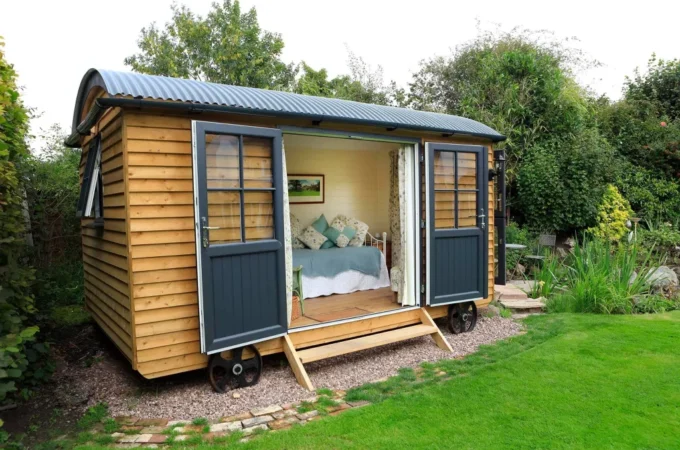
Pull Behind Sprayer: Everything You need to Know
To make the lawn attractive, you need to apply pesticides and fertilizers uniformly and according to the requirement.
A handheld sprayer was used for misting, but it takes a lot of time and chemicals may harm your skin. Sometimes due to manual application, some lawn areas or few plants receive plenty of fertilizer or pesticides whereas, few spots may be skipped from spraying.
The overdose may lead to the compromised beauty of the lawn. To avoid this mishap, you can use a pull behind sprayer that is an automated method of spraying. Using this tool for misting saves your time and helps in even the application of plant-friendly chemicals.
Best ATV Sprayer
ATV (all-terrain vehicle) is a way of making the spraying process less time-consuming and effortless. You can simply mount the sprayer on ATV and spray it from the vehicle. Adapting this method of spraying saves your leg work, and your plants remain healthy with little effort.
Many sprayers can easily get attached with ATV and work best in both rough and smooth terrain.
Ironton spot sprayer is the budget-friendly best ATV sprayer for pesticide spraying having a capacity of 8 gallons. Its high UV-resistant tank makes it compatible with all pesticides.
Another high-pressure durable ATV sprayer includes the NorthStar ATV sprayer, which comes with a high-pressure pump (200 PSI). Its spray hose has a reach of 35 feet.
What are the features of Pull-Behind Sprayer?
The advanced features of the sprayer make it the perfect tool for turf. The functionality of different parts of the pull-behind sprayer may vary slightly from model to model. The features of the pull-behind trailer and spot sprayer include:
Nozzle
The flow occurs from the nozzle in the form of a mist, you can adjust it according to your need. The rate at which the nozzle produces droplets depends on the pressure. The spray nozzle consists of:
- Nozzle tip
- Spray nozzle body
- The cap
Various types of nozzle available in the market each work best with different chemicals. Two widely use nozzle include:
Hollow cone
For fungicide and insecticide, a hollow cone nozzle is preferred. It produces a small droplet, and its performance is better than the other types. The droplets produced from this type of nozzle are of high concentration.
Flat fan nozzle
The output from the flat fan nozzle is increased in the middle while slighter in the corners. Flat fan nozzles are used to spray herbicides such as glufosinate, lactofen, and mesotrione.
Tank

The tank is present over the pump, so they quickly move the solution without utilizing higher energy.
The role of a tank is to store the fluid (chemical), so the composition of the tank must be compatible with the tank, or the chemical does not react with the tank’s material.
It is necessary to check if the tank is chemical or UV resistant. Chemical sensitive material decreases the durability of the pull-behind sprayer. Using tanks that are made of a material that does not resist corrosion may harm the plant. The corrosive material reacts with chemicals and alters the composition of fertilizer or pesticide.
Materials used for manufacturing tow behind sprayers include fiberglass, polyethylene, and stainless steel. These materials are corrosion and chemical resistant.
Transparent tanks made of fiberglass and have a large filler opening for filling are considered perfect for this equipment.
Sprayer Hose
The sprayer hoses are meant to carry the chemicals from the sprayer tank to the nozzle tip. If the hose collapses, it results in the prevention of fluid flow.
Pressure gauge

The pressure gauge is the device or mechanical system attached with the pull-behind sprayer that measures the pressure. The pressure or the flow rate depends on the pump and not on the pressure gauge.
Flow controlling valve
The pressure valve controls the flow of fluid from the pump and regulates the pressure. Four types of valves are generally present in the pull-behind the sprayer
- Valve for controlling the flow of the non-displacement pump
- Throttling valve
- Boom control valve
- Plunger valve
Uses of the pull-behind sprayer

Pull behind sprayer is used to apply herbicides, insecticides, fungicides, pesticides, and fertilizers on the turf.
Both for massive coverage like in golf clubs and small coverage like home garden pull-behind sprayer works best.
This pull-behind sprayer helps in broadcast and spot spraying. In spot-spraying, chemicals are applied to the area where it is onerous to mist the chemical. While broadcast spray, having a boom helps to spray chemicals on a large area in less time.
Conclusion
Pull-behind the sprayer is the other name of the tow-behind trailer and is used for spraying growth-promoting chemicals on plants, trees, and turfs.
Different models of the pull-behind sprayer offer diversified features but rudimentary parts remain the same for all types of the tow-behind sprayer.
The equipment comes with two types of nozzle hollow cone nozzle and flat fan nozzle. You can use the hollow cone nozzle for fungicides and a flat fan nozzle for herbicides.
The most durable and chemical-resistant tank material is fiberglass. Polyethylene and stainless steel are also used in the manufacturing of pull-behind sprayers.
In a nutshell, this automated spraying machine is best for agriculturists, saves your time, and reduces the labor cost.




